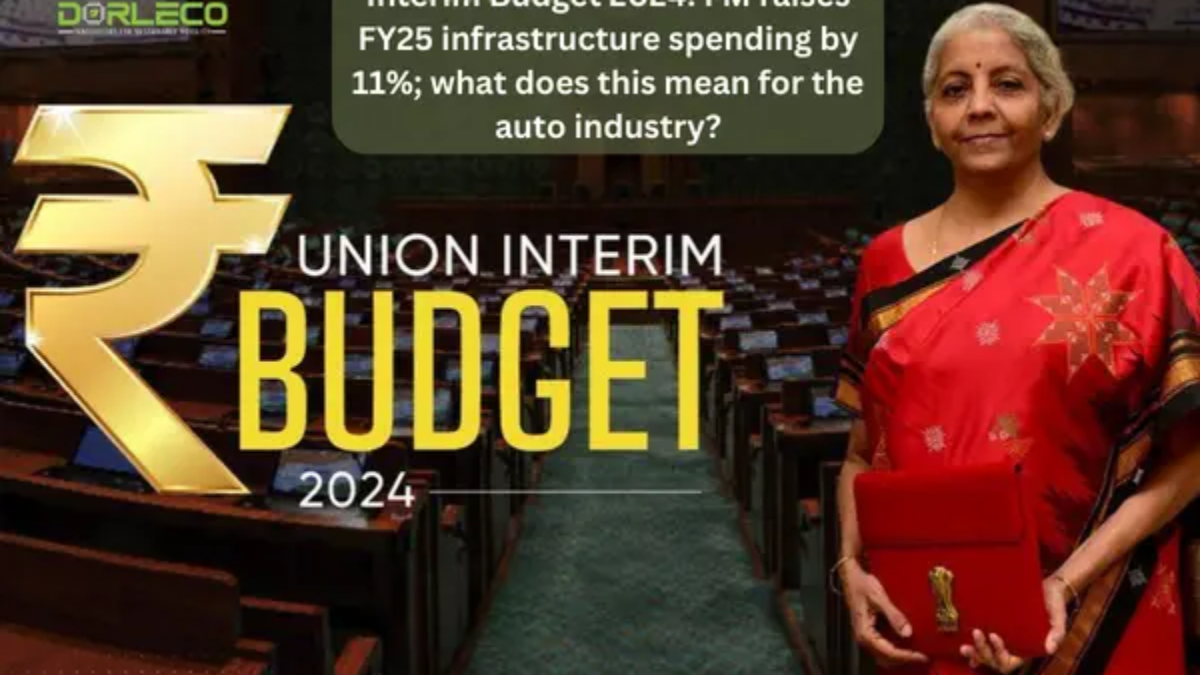The FM mentioned that the budgetary outlay for the upcoming year has grown by 11.1% to INR 11.11 lakh crore in her speech on the budget. 3.4% of the GDP would be this. This was a vote-on-account, and the final FY25 infrastructure budget will be submitted in July, in light of the April–May Lok Sabha elections this year.
New Delhi: The Interim Budget 2024 was delivered on Thursday by Finance Minister Nirmala Sitharaman, who stated that the goal is to transition to “Viksit Bharat” by 2047. This was a vote-on-account since the Lok Sabha elections are due to happen in April and May of this year. The final FY25 infrastructure budget will be presented in July.
The FM announced during her budget speech that the infrastructure spending for the upcoming year has climbed to INR 11.11 lakh crore, an increase of 11.1%. This amounts to 3.4% of GDP.
For FY25 infrastructure, the Ministry of Road Transport & Highways (MoRTH) has been given INR 2.78 lakh crore, and the Ministry of Railways has been given INR 2.55 lakh crore.
“With a significant increment in capital expenditure target for FY25, the budget emphasizes the enhancement of infrastructure for multi-modal connectivity,” says Sunjay J. Kapur, Chairman of Sona Comstar.
FAME Scheme
Since the market for electric cars (EVs) has not yet reached price parity with that of internal combustion engine (ICE) vehicles, OEMs, component manufacturers, and other ecosystem participants have been looking for ongoing support in the form of incentives or subsidies.
The government has allotted INR 2,671 crore for the Faster Adoption and Manufacturing of (Hybrid and) Electric Vehicle (FAME) program, according to the Expenditure Budget document, even though the FM did not refer to its extension or the beginning of its third leg.
A plan for FY2024–2025. Furthermore, it demonstrates that the government has changed the INR 5,172 crore allotted for FY2023–2024 to INR 4,807 crore.
With an INR 895 crore investment, the government first introduced the FAME plan in 2015. Launched in 2019, FAME-II has a three-year total budget of INR 10,000 crore. FAME-II was extended in 2021 and will run through March 31, 2024.
Senior Vice President and Group Head of Corporate Ratings at ICRA Shamsher Dewan makes the case that keeping FAME-II subsidies in place after March 2024 will probably encourage the adoption of electric vehicles and give rise to future subsidy support.
“The budgeted FAME II outlay for FY25 infrastructure represents the residual allocation under the scheme, which forms part of the INR 10,000 crore initial allocation; timely rollout of new subsidy scheme remains key in accelerating electrification transitions,” he stated.
Mechanism for Payment Security
FM During her speech, Nirmala Sitharaman declared, “Our Government will support manufacturing and charging infrastructure to expand and strengthen the EV ecosystem.” Payment security features will promote e-bus adoption for public transportation networks.
Payments to service providers that take part in e-bus tenders to “own, maintain, and operate” these e-buses on a per-kilometer basis (Opex model) are impacted by a number of the government’s transportation initiatives. Similar to the payment security mechanism used in the energy industry, a payment security mechanism (PSM) is being developed to guarantee that operators receive payment on schedule even in the event of delays caused by transportation projects.
In the event of defaults, operators will get compensation through a fund established by the government. Participation from financing and leasing firms will eventually assist the operators in removing these buses from their balance sheets. Thus, by operating more electric buses, the PSM will contribute to the decarbonization of public transportation while safeguarding the operators’ financial stability and making the opex model bankable.
The FM went on to say that the government will concentrate on rooftop solarization, which will allow one crore homes to receive up to 300 units of free electricity each month. This will also help with EV charging.
PLI scheme
According to the budget paper, the government has set up INR 3,500 crore for the Production Linked Incentive (PLI) plan for autos and auto parts for FY2024–2025. Additionally, it mentions that the budget for FY2023–24 has been changed from INR 604 crore to INR 484 crore.
“Cash flows and credit metrics for the automotive OEMs and ancillaries would be supported by the disbursement of funds under PLI schemes (enhanced budgeted expenditures for both automobiles and components as well as advanced chemistry cell battery storage),” stated Dewan of ICRA.

